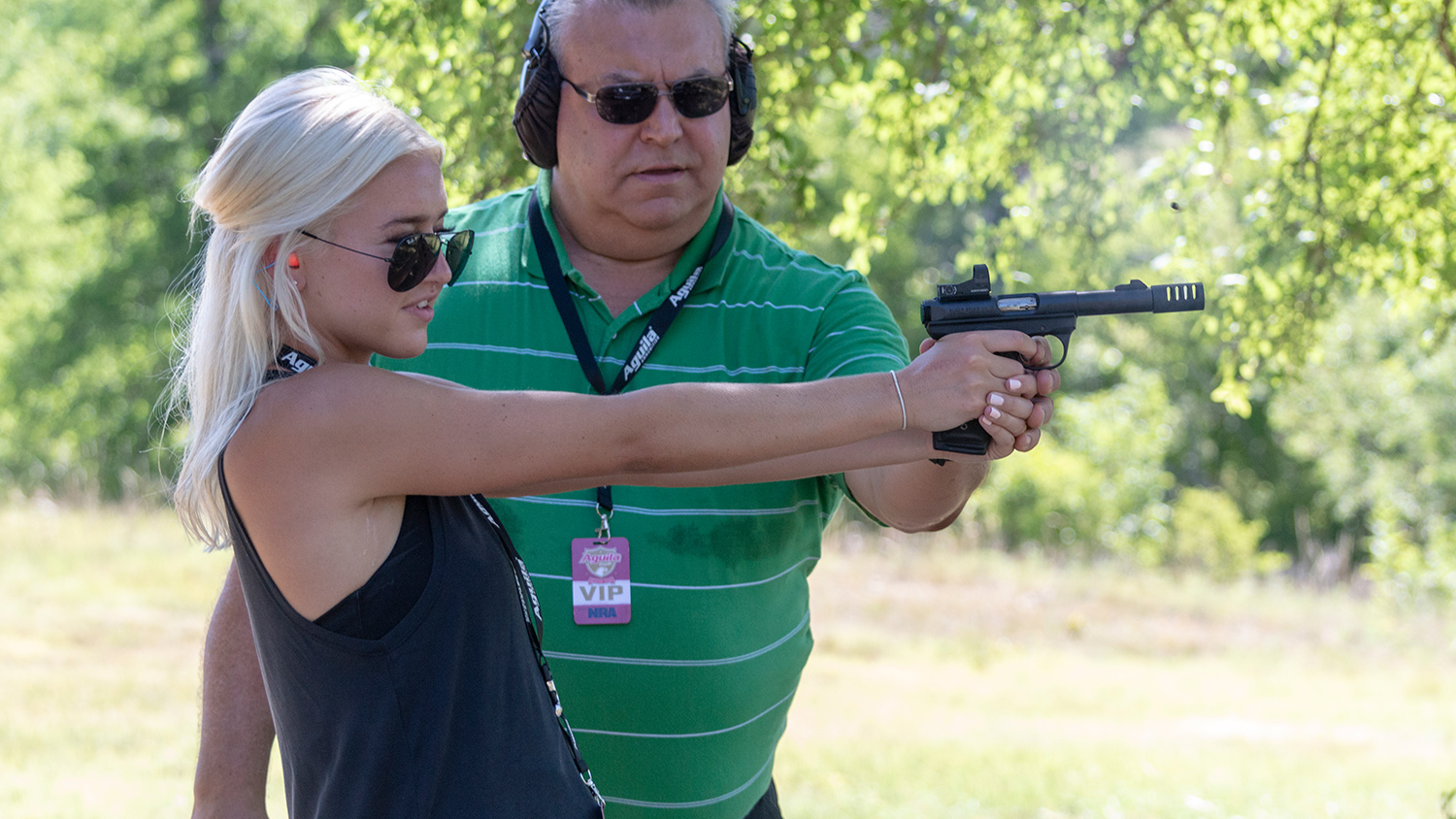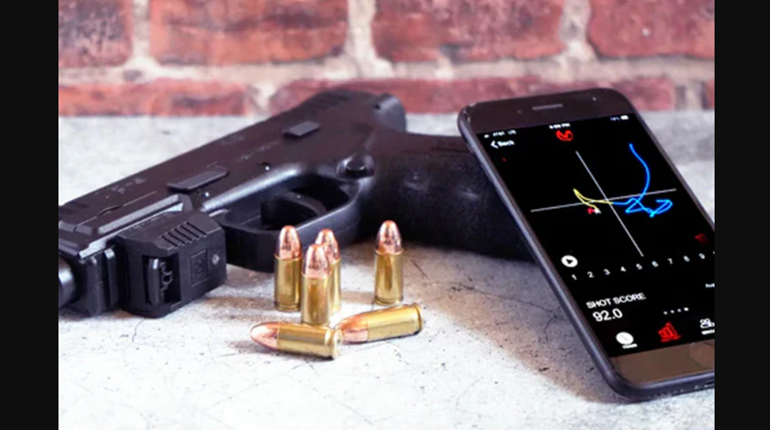
An effective grip lets us squeeze the trigger without moving the sights. A steady grip will also help with a natural point-of-aim—one that doesn’t require constant “tweaking” to keep the sights aligned. The best way to check your grip is with dry-firing practice, after double-checking that the gun is unloaded. Check your owner’s manual to be sure, but most guns can be fired empty. A .22 cal. pistol, however, requires a dummy round to prevent the firing pin from slamming against the chamber wall (where the soft, brass rimfire case would normally reside.)
Focus
The most important part of your trigger squeeze is at the instant the gun fires. We’re hardwired to blink and/or jerk the trigger in anticipation of the noise, so dry-firing a few minutes each day helps develop muscle memory that can override this natural instinct. Like a slow motion camera, focus on what’s happening during the last split second before the gun fires. If you don’t see the sights, then hitting the target becomes a game of chance.
Adjustments
If your sights jump to one side during dry-fire practice, try re-positioning your trigger finger left or right to achieve a straight line squeeze. Another way you might need to tune your grip is to reposition the back strap for a natural point-of-aim. For me, the back strap lays along the “life line” of my palm.
How hard should you grip? Err on the hard size so that the trigger pull doesn’t move the gun. Most of the pros use a very firm grip, particularly to steady the gun during rapid fire. Putting a “death grip” on the gun may cause tremors or cause your hand to go to sleep, so strive for a happy medium.
Read more pistol shooting articles:


































